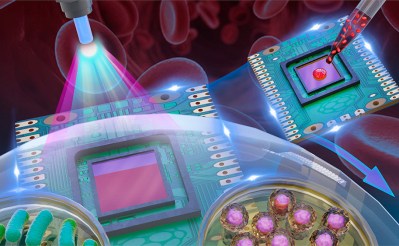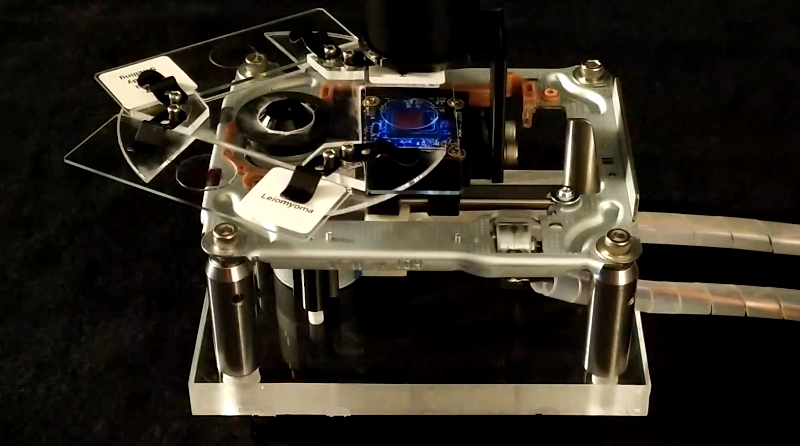When you think of high-throughput ptychographic cytometry (wait, you do think about high throughput ptychographic cytometry, right?) does it bring to mind something you can hack together from an old Blu-ray player, an Arduino, and, er, some blood? Apparently so for [Shaowei Jiang] and some of his buddies in this ACS Sensors Article.
For those of you who haven’t had a paper accepted by the American Chemical Society, we should probably clarify things a bit. Ptychography is a computational method of microscopic imaging, and cytometry has to do with measuring the characteristics of cells. Obviously.

Anyway, if you shoot a laser through a sample, it diffracts. If you then move the sample slightly, the diffraction pattern shifts. If you capture the diffraction pattern in each position with a CCD sensor, you can reconstruct the shape of the sample using breathtaking amounts of math.
One hitch – the CCD sensor needs a bunch of tiny lenses, and by tiny we mean six to eight microns. Red blood cells are just that size, and they’re lens shaped. So the researcher puts a drop of their own blood on the surface of the CCD and covers it with a bit of polyvinyl film, leaving a bit of CCD bloodless for reference. There’s an absolutely wild video of it in action here.
Don’t have a Blu-ray player handy? We’ve recently covered a promising attempt at building a homebrew scanning electron microscope which might be more your speed. It doesn’t even require any bodily fluids.
[Thanks jhart99]
















Looks like they’ve built upon the pioneering work of Dr. Edwin En-Te Hwu and his team https://scholar.google.com/citations?user=0sqEbLEAAAAJ&hl=en who have been featured on Hackaday before https://hackaday.com/2021/12/24/when-hacking-and-biosensing-collide/.
Paired with a rotating laser could be interesting.
https://phys.org/news/2022-04-rotating-blue-laser-reveals-unimagined.amp
“There’s one catch, professor. The analysis of these samples will require… a sacrifice.”
@Sean, I’ll be chuckling to myself all day over that one. Well done.
Talk about putting blood, sweat & tears into it.
I’m more worried about who’s prostrate that is (looking at the sample label)
When you have to make a blood sacrifice you know you’re doing real science.
BLOOD FOR THE . . . uh, science god?
My God. It’s full of SARS-CoVAIDS.
Blood on CCD? That definitely got me OCD.
Wouldn’t crab blood (blue) be a better choice? Mammal blood, being red, would attenuate the almost UV 405nm laser. (Or is selective attenuation the point?)
All that matters is the size and shape of the “lenses”, and human “red” blood cells meet the requirements.
The blood cells themselves aren’t red, just the hemoglobin protein. Hemoglobin makes up around 1% of blood (11 to 17 grams per deciliter, blood spec gravity about 1.06) while the red cells make up between 30~48% of the volume.
Without this paper, my first guess would be that the protein would be a substantial “flaw” in the lens, but apparently it isn’t a huge issue.